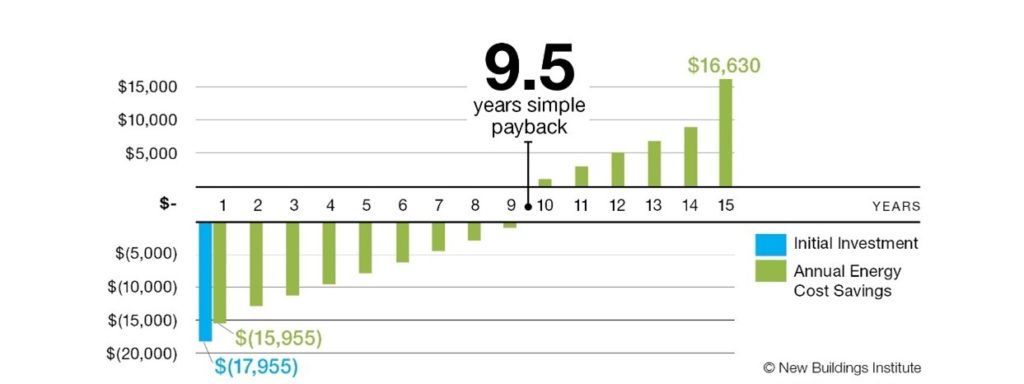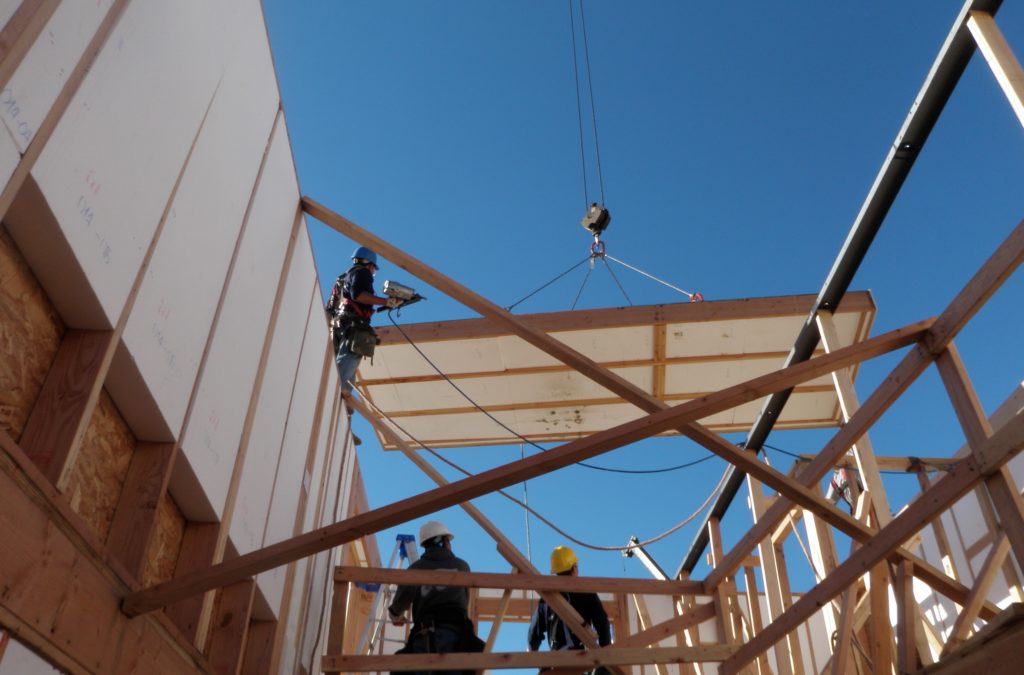For the first time, the new 2021 update of the International Energy Conservation Code (IECC), which is anticipated to be released in the next few weeks, includes a Zero Energy Home Appendix that provides cities and states with ready-made code language to help them achieve zero energy buildings now. The Appendix is called “zero energy” because it refers to a home that produces as much electricity as it consumes over the course of a year from renewable energy sources.
 It is an optional add-on to the 2021 IECC but offers the first real opportunity for jurisdictions to advance their energy and climate goals by lowering the energy use and carbon footprint in residential new construction. The Appendix was developed by a coalition of building code experts from NBI, the Natural Resources Defense Council, and other organizations.
It is an optional add-on to the 2021 IECC but offers the first real opportunity for jurisdictions to advance their energy and climate goals by lowering the energy use and carbon footprint in residential new construction. The Appendix was developed by a coalition of building code experts from NBI, the Natural Resources Defense Council, and other organizations.
Efficiency First to Lower Cost and Carbon
The Appendix requires energy efficiency first to lower energy demand, with newly constructed homes achieving an Energy Rating Index (ERI) score ranging from 43 to 47 depending on the local climate zone. Testing to ensure the ERI is met before adding renewable generation minimizes the cost of solar installations and maximizes savings on monthly energy bills. Besides the cost savings, zero energy building performance improves comfort from better insulation, lighting and heating, and cooling systems.
The balance of the energy use is met with onsite or offsite renewable energy. The upfront cost of adding solar photovoltaics (PV) to a home has dropped dramatically over the past few years, it is more affordable than ever with a payback on the initial investment estimated at less than 10 years (not including tax or utility incentives) from energy savings.

For cities and states with sustainability or climate action goals, adopting the Appendix is a critical resource for achieving those goals. As more government leaders develop sustainability and/or climate action plans and seek ways to reduce greenhouse gas emissions, they are increasingly recognizing that buildings – which are responsible for 39% of U.S. carbon emissions – must play a central role in addressing the problem.
An Approach to Future-Proof Buildings and Jobs
Adoption of the Appendix by jurisdictions provides clarity and consistency for home builders, contractors, and product manufacturers. It helps avoid confusion stemming from a patchwork of various codes created by individual states and cities. Builders will be able to standardize their construction practices across jurisdictions and states to meet requirements, lowering their cost to follow the code and making education, incentive programs, and implementation significantly more straightforward and cost-effective.
As the IECC continues to evolve to keep up with modern-day building practices and new products, adopting the Appendix can smooth the transition to zero energy performance for builders and buyers. It helps orient the construction market with the ins and outs of zero energy buildings and familiarizes builders and code officials with aspects of zero energy buildings as a key step to achieving widescale market understanding and acceptance of zero energy construction techniques, products, and processes.
Increasing demand for greater energy efficiency and renewable energy technologies helps boosts job growth and keeps investment local to the city where construction is happening. Energy professionals will be needed to evaluate and test homes to assure they achieve the ERI score, as well as to plan and install solar PV panels or procure other renewable energy access. When renewable energy is demanded on buildings, it modernizes and raises the overall expertise of the workforce ushering in better-paying jobs within communities.
In addition to the Zero Energy Homes Appendix, a commercial Zero Code Renewable Energy Appendix was adopted into the 2021 IECC. That language sets an efficiency standard for commercial, institutional, and multi-family buildings and directs a method to procure enough renewable energy to achieve zero-net-carbon annually through onsite renewable energy systems and procurement of off-site renewable energy. The Renewable Energy Appendix was developed by The American Institute of Architects and Architecture 2030.
Jurisdictions interested in learning more about how to apply the Zero Energy Homes Appendix to help meet their energy and climate action goals can find out more in our factsheet.
by Kim Cheslak, Director of Codes
Bio

